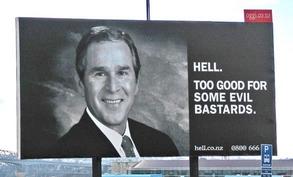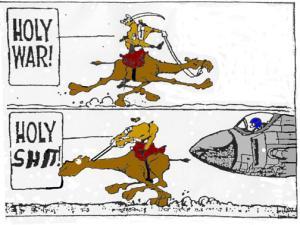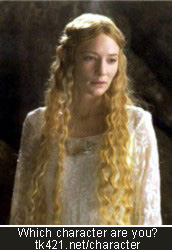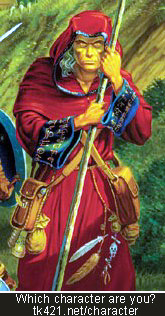Narcissus' Echo
Thoughts, tears, rants, ruminations, hopes, fears, love(s), and prayers of just another being passing through this wracked sphere...
Saturday, August 13, 2005
Zoom, zoom, zoom
A tour of Shoreline Park, Mountain View, on inline skates. These are the Rollerblade Lightning 09 skates. While not as comfortable as my other pair, the E9 Carbons (4 wheels each), they are appreciably faster with 5 wheels each. My third pair, the much-heavier Coyotes, are only suitable for off-road inline skating or when it rains.

Maps of Shoreline Park:


Where it begins: the parking lot at the end of San Antonio Road, beside Highway 101:

Pumping station:

Observation platform for birdwatchers. Mount Hamilton and the city of Milpitas in the distance. Though the picture may suggest otherwise, this locale is not conducive to romantic overtures: hydrogen sulfide (H2S) from the decaying matter in the pond is a mood killer (unless the pong of rotten eggs turns your date on).

Trail running parallel to salt pond (looks like the bay itself, doesn't it?).The bay is actually a little further out.

The trail turns and heads inland at this point. With the gradient in my favor, and a stiff breeze on my back, it's pure bliss to cruise down this stretch at a good clip.

Two 90-degree turns bring me to this part of the trail beside NASA Ames Research Center (ARC).

This part of the trail is on a man-made ridge under the power lines.

Visible from the trail, this is the huge intake of the NASA 80X120 wind tunnel, the largest in the world. The intake is 363 feet wide and 161 feet high. Some of the high-voltage overhead power lines in the earlier pictures lead to the wind tunnel complex. The fan motors that power the wind tunnel require 106 megawatts of power at full-speed. The fans generate approximately 135,000 horsepower.

Sideview. Take note that the wind tunnel is about 1/2 mile behind the apartment complex. NASA Ames has several wind tunnels, but this is the largest. The largest is named the "80X120 Foot Wind Tunnel" because that is the cross-sectional area of the test section. This is big enough to test a full-size Boeing 737 aircraft. The wind tunnel became operational in 1987 and can test large or full-scale aircraft models with a wind velocity of up to 190 mph. The wind is created by six huge 40-foot fan blades driven by six giant electric motors. The motors can move 1 million pounds of air per second. The 80X120 foot wind tunnel is part of a larger facility, the National Full-Scale Aerodynamics Complex, which also includes an older closed-circuit 40X80 foot section that can test models at up to 345 mph. This closed circuit part of the wind tunnel has a circumference of a half mile.

This large frame structure in the open field at NASA is an outdoor engine test stand. By its gargantuan dimensions, it is probably not for testing rice-boy engines. (For Singaporean / Malaysian readers, a local equivalent of a rice-boy vehicle is an "Ah Beng Qia"). Still, one must be careful never to give rice-boys too much credit for intelligence. E.g. cars are meant to be driven on roads, but yet, rice-boys continue to drive their economy cars into ravines, rivers, trees, bus stops, living rooms, gardens, pedestrians, etc.

A view of the trail before it dips into an underpass under Highway 101. Stevens Creek is equipped with a small dam with a fish ladder to allow migrating fish to swim upstream. Below it, the creek flows into a concrete-lined channel.

Ascending again on the other side, the trail re-emerges, sheltered by heavier foliage. During the seasons of spring and fall, insects are rather plentiful at sunset. If you go fast enough (on your inline skates or bicycle), you may pull off an impression of a windshield and watch them splatter on your Oakley lenses. Mmm... dinner...

A sharp 90-degree turn forces you to slow down here.

A second 90-degree turn, in short order, signals the need to slow down. This is the pedestrian crossing as the trail intersects Moffett Blvd.

Doesn't look like you are in the heart of a busy city like Mountain View, does it? The trees and foliage do a good job of creating the illusion. Highway 85 is actually on the left side.

A man on inline skates pushing a stroller across one of the many bridges over Stevens Creek, to Whisman Park and School. Since the crossing from Moffett Blvd, the trail has been on a slight positive grade (which explains the tired man).

More trails.

More lazy S-curves (great place to practice crossovers).

Another bridge over Stevens Creek.

Stevens Creek. On the right, you can see the trail leading to the bridge in the preceding picture.

The 1,100 feet long Central Expressway Pedestrian Bridge usually marks the end of my inline skating route in Mountain View. The uneven wooden planks do not particularly make an effective surface for braking or slowing down--which makes it rather... inconvenient (or painful) when the bridge descends on the other side.

At the base of the bridge, there are stairs for pedestrians and a ramp for bicycles and wheelchairs.

Distance covered one-way, from the parking lot at San Antonio Road, to Central Expressway Pedestrian Bridge, is a little over 5 miles (8 km).
Friday, August 12, 2005
Which book are you?
I should have seen this coming.
Sigh!

You're The Dictionary!
by Merriam-Webster
You're one of those know-it-all types, with an amazing amount of knowledge at your command. People really enjoy spending time with you in very short spurts, but hanging out with you for a long time tends to bore them. When folks really need an authority to refer to, however, you're the one they seek. You're an exceptional speller and very well organized.
Take the Book Quiz at the Blue Pyramid.
Surprise, surprise...
I'm leaving on a jet plane... NOT!
I guess the adage of "Do what you say, and say what you do: anything less is a lie," is lost:
Americans didn't flock to Canada after Bush win
By David Ljunggren Thu Aug 4, 2:55 PM ET
OTTAWA (Reuters) - Canadians can put away those extra welcome mats -- it seems Americans unhappy about the result of last November's presidential election have decided to stay at home after all.
In the days after President Bush won a second term, the number of U.S. citizens visiting Canada's main immigration Web site shot up sixfold, prompting speculation that unhappy Democrats would flock north.
But official statistics show the number of Americans actually applying to live permanently in Canada fell in the six months after the election.
GOPbloggers' take on this is hilarious (the last line is a killer).

Thursday, August 11, 2005
Which D&D character are you?
For Dungeons & Dragons / Advanced Dungeons & Dragons fans only:
I am a: Neutral Good Elf Mage Druid
Alignment:
Neutral Good characters believe in the power of good above all else. They will work to make the world a better place, and will do whatever is necessary to bring that about, whether it goes for or against whatever is considered 'normal'.
Race:
Elves are the eldest of all races, although they are generally a bit smaller than humans. They are generally well-cultured, artistic, easy-going, and because of their long lives, unconcerned with day-to-day activities that other races frequently concern themselves with. Elves are, effectively, immortal, although they can be killed. After a thousand years or so, they simply pass on to the next plane of existance.
Primary Class:
Mages harness the magical energies for their own use. Spells, spell books, and long hours in the library are their loves. While often not physically strong, their mental talents can make up for this.
Secondary Class:
Druids are a special variety of Cleric who serves the Earth, and can call upon the power in the earth to accomplish their goals. They tend to be somewhat fanatical about defending natural settings.
Deity:
Mystra is the Neutral Good goddess of magic. She is also known as the Lady of Mysteries. Followers of Mystra wear armor and carry shields with her symbol on them. Mystra's symbol is a ring of stars.
Find out What D&D Character Are You?, courtesy of NeppyMan (e-mail)
NeppyMan (e-mail)
During my primary school days, I had a classmate who was bestowed with the rather unglamorous nickname of "Jaam-barn" (Bahasa Malayu for "toilet bowl," I believe). His D&D Character Sheet had the following remark under the sub-heading, "Permanent Injuries": "Fried balls [testicles]"--a souvenir from an encounter with a grumpy Red Dragon.
AD&D Famous Last Words: "But it's only a LITTLE red dragon."
Ah, good times.
I am a: Neutral Good Elf Mage Druid
Alignment:
Neutral Good characters believe in the power of good above all else. They will work to make the world a better place, and will do whatever is necessary to bring that about, whether it goes for or against whatever is considered 'normal'.
Race:
Elves are the eldest of all races, although they are generally a bit smaller than humans. They are generally well-cultured, artistic, easy-going, and because of their long lives, unconcerned with day-to-day activities that other races frequently concern themselves with. Elves are, effectively, immortal, although they can be killed. After a thousand years or so, they simply pass on to the next plane of existance.
Primary Class:
Mages harness the magical energies for their own use. Spells, spell books, and long hours in the library are their loves. While often not physically strong, their mental talents can make up for this.
Secondary Class:
Druids are a special variety of Cleric who serves the Earth, and can call upon the power in the earth to accomplish their goals. They tend to be somewhat fanatical about defending natural settings.
Deity:
Mystra is the Neutral Good goddess of magic. She is also known as the Lady of Mysteries. Followers of Mystra wear armor and carry shields with her symbol on them. Mystra's symbol is a ring of stars.
Find out What D&D Character Are You?, courtesy of
During my primary school days, I had a classmate who was bestowed with the rather unglamorous nickname of "Jaam-barn" (Bahasa Malayu for "toilet bowl," I believe). His D&D Character Sheet had the following remark under the sub-heading, "Permanent Injuries": "Fried balls [testicles]"--a souvenir from an encounter with a grumpy Red Dragon.
AD&D Famous Last Words: "But it's only a LITTLE red dragon."
Ah, good times.
Nearly winning & it's Bush's fault that your kids are fat
Be sure to put down your drink before reading this piece by Mark Steyn of the Chicago Sun-Times:
Democrats' new strategy: Almost winning
The other day an official with a British teachers' union proposed that the concept of "failing" exams should be abolished. Instead of being given a "failing" grade, she said, the pupil would instead be given a "deferred success."
Oh, sure, you can scoff. But evidently the system's already being test-piloted in Howard Dean's Democratic Party. That's why the Dems' Congressional Campaign Committee hailed their electoral failure in last week's Ohio special election as a triumphant "deferred success." As their press release put it:
"In nearly the biggest political upset in recent history, Democrat Paul Hackett came within just a few thousand votes of defeating Republican Jean Schmidt in Ohio's Second Congressional District."
Yes, indeed. It was "nearly the biggest political upset in recent history," which is another way of saying it was actually the smallest political non-upset in recent history.
[My thoughts]:
I wonder how the British will take to the second terrorist attack in London being described as a "deferred success" instead of a "failure." I.e. "Even in failure, the nature of the terrorists was evident in their tactics." I mean, surely we won't want to hurt the feelings of the terrorists, no? That would be barbaric, yes?
Back here across the pond, the left is not done yet, in their tradition of blaming President Bush for everything, they now allege that it is his fault that children in America are getting fatter:
[Back to Mark Steyn]:
the Dems have found a new line of attack to counter the evil election-stealing moron. A few days ago, the Democratic National Committee put out a press release attacking Bush for being physically fit. It seems his physical fitness comes at the expense of the nation's lardbutt youth. Or as the DNC put it:
"While President Bush has made physical fitness a personal priority, his cuts to education funding have forced schools to roll back physical education classes and his administration's efforts to undermine Title IX sports programs have threatened thousands of women's college sports programs."
Wow. I noticed my gal had put on a few pounds but I had no idea it was Bush's fault. That sonofabitch chicken hawk. [. . . T]he idea that Bush is heartlessly pursuing an elite leisure activity denied to millions of American schoolchildren takes a bit of swallowing given that his preferred fitness activity is running. "Running" requires two things: you and ground. Short of buying every schoolkid some John Kerry thousand-dollar electric-yellow buttock-hugging lycra singlet, it's hard to see what there is about "running" that requires increasing federal funding. [. . .]
Sitting behind yet another Vermont granolamobile bearing the bumper sticker "Bush Scares Me," I found myself thinking that perhaps the easiest way to reduce childhood obesity in American families might just to be to shout out, "Look! There's big scary Bush! Run! Run for your lives! No, wait, there's John Bolton, too! Better cut through the park before he puts his hands on his hips in an aggressive manner!" [. . .]
The DNC's Bush-is-the-reason-your-kid-is-fat press release is a convenient precis of the party's problem: While he runs rings around them, the Dems lounge about getting flabbier by the week and telling themselves it's all his fault they can barely move except to complain about Bush's Supreme Court nominee's kid being overly cute.
(Source)
It's always somebody else's fault, isn't it?

Wednesday, August 10, 2005
A billboard ad for Hell Pizza in New Zealand

I wonder if they remember that in 2001 New Zealand disbanded such a significant number of its air combat squadrons that it no longer possesses any strike capability, thereby requiring a memorandum with the US military to come to its
In 2001 the Labour Government, citing a benign security environment, cancelled the purchase of 28 F-16 Fighting Falcon fighters, and disbanded the existing A-4 Skyhawk and Aermacchi MB-339 squadrons<. One of the units disbanded included the famous No. 75 Squadron, an ex New Zealand squadron unit in the Royal Air Force that transferred to the RNZAF due to that unit's meritorious service during World War II and last flew A-4 Skyhawk fighter bombers. The other disbanded squadrons were No. 2 Squadron flying A-4 Skyhawks and No. 14 Squadron flying Aermacchi MB-339CB aircraft.
By 2003, the RNZAF was reduced to a total of 50 aircraft and 2,523 personnel (including civilian employees). The RNZAF no longer has any strike capability. Current duties include maritime patrol, search and rescue, and transport.
(Source)
US Air Force: "Gee... I don't know. I guess our radars ran low on batteries or something, and the Chinese bombers snuck in..."
Then again, China has no need for military maneuvers--she has 1.5 billion Chinese to send over.
Just look at Christchurch and Dunedin.
Enough said.
Hell Pizza

Follow up: New Zealand billboard causes stir
Which country am I?

You're Afghanistan!
In the words of Bob Dylan, you "haven't known peace and quiet in so long [you] don't remember what it's like!" Sad but true. Boss after boss has led you around, using you for their nefarious purposes, and dumping you when the time was right. You've hurt and been hurt and now you're just sick and tired.
When will people leave you alone and let you do your own thing? But you don't really even know what you want anymore.
Take the Country Quiz at the Blue Pyramid
I suppose I could start humming the old parody of Harry Belafonte's "Banana Boat Song (Day O)," "Mr. Taliban," now. Alternate version here.
 Credit: Fred Stultz
Credit: Fred Stultz
Tuesday, August 09, 2005
Dogma and deracination
Warning: the following (long) post may contain opinions offensive to certain readers. Muslim readers are advised to skip this entry. Proceed at your own discretion.
A couple of years ago, while I was back in Singapore for a holiday, I met up with an old friend
Beyond Belief: Islamic Excursions Among the Converted Peoples (1998) is the follow-up book to Among the Believers: An Islamic Journey (1981). The latter was written as a result of a seven-month journey in 1979 across a number of Muslim countries in Asia: Iran, Pakistan, Malaysia, and Indonesia. Beyond Belief: Islamic Excursions Among the Converted Peoples is the result of the author retracing his steps nearly fourteen years later, albeit with a different focus: while the earlier book focused on the revolutionary potential of the countries he visited, the latter attempts to present a more intimate picture through interviews with everyday denizens in the respective nations.
Naipaul writes:
The cruelty of Islamic fundamentalism is that it allows only to one people - the Arabs, the original people of the Prophet - a past, and sacred places, pilgrimages and earth reverences. These sacred Arab places have to be the sacred places of all the converted people. Converted peoples have to strip themselves of their past; of converted peoples nothing is required but the purest faith (if such a thing can be arrived at), Islam, submission. It is the most uncompromising kind of imperialism.
Such a form of religio-cultural imperialism is not so much Islamicization but Arabization: the converted people are required to cut themselves off culturally from their past. They become, in effect, a deracinated people. A body of people without a past is an insecure populace, and thus more likely--and more desperate--to acquire a new identity, a new history--and
In an August 2001 interview with the Literary Review, Naipaul said, "I was interested in these convert societies [in Indonesia, Iran, Malaysia, and Pakistan]; history now begins in Arabia. It's as though they have no history before the coming of Islam."
In his review, C. J. S. Wllia states,
Naipaul's thesis in Beyond Belief is: "There probably has been no imperialism like that of Islam and the Arabs. [...] Islam seeks as an article of the faith to erase the past; the believers in the end honor Arabia alone, they have nothing to return to." In the Indian context, Naipaul views Islam as far more disruptive than the British rule.
Now, a casual reader might label V. S. Naipaul as an eloquent hatemonger, and me as one of his gullible stooges, but consider this recent article on August 6th 2005, by a BBC correspondent based in Kuala Lumpur, Malaysia, Jonathan Kent:
Malaysia's clash of cultures
When it comes to interpreting Islam, many Malaysians are torn between their own culture, Western influence and a growing trend towards copying all things Arabic.
A few days ago I visited P Ramlee's old house in Kuala Lumpur.
Unless you are from this part of the world you probably will not have heard of him.
But in Malaysia, more than 30 years after his death, he is still an icon.
In life he was Malaysia's Elvis and Frank Sinatra, Cary Grant and Irving Berlin all rolled into one. His modest bungalow is now a museum.
But when I visited I was alone, apart from an attendant who seemed to be hiding under his counter.
So I wandered around looking at photos from P Ramlee's films and listening to his wonderful singing voice.
'Gentle and sensual'
One of the reasons I look forward to the holidays here is because the local TV stations always screen a good selection of his movies.
My favourite is the comedy Madu Tiga - or Three Honies - made in 1964.
P Ramlee plays a married man who decides to take a second and then a third bride, all with the collusion of his first wife's mischievous father.
But despite his best efforts to keep the three from finding out about one another, inevitably they meet, become friends and finally gang up on him.
It is a cautionary tale.
But what is most striking about P Ramlee's films from the 1950s and 1960s is their depiction of Malay life.
His movies are gentle and sensual, the people relaxed, fun-loving and charming. There are even jokes about gin.
Shadow puppetry
One can still catch glimpses of a Malaysia P Ramlee would have recognised, in backwaters like the east coast state of Kelantan.
I had traveled deep into its countryside looking for Dollah Baju Merah-Abdullah, who wears a red shirt. He is the last performer of the local brand of Wayang Kulit: shadow puppetry.
"I can't speak well," he told me, when he came out onto the porch of his little wooden house to greet me and he tapped his chest.
"I've been ill," he said.
He was not up to giving a demonstration but half-heartedly pulled out a couple of puppets from a box to show me.
I could see instantly why his is a dying art. The puppets depict heroes and gods from the Hindu epics the Ramayana and the Mahabharata.
The local government in Kelantan put a stop to Dollah's performances. Likewise traditional dance.
They are considered un-Islamic.
Foreign endorsement
Elsewhere in Kelantan I met up with Nik Rashidee, the custodian of an astonishing collection of Malay woodcarvings assembled by his late brother Nik Rashidin, the greatest carver of his age.
Among the antique pieces the Hindu influence is obvious: carvings of Garuda (a Hindu deity and king of the birds) and dagger handles in the shape of Shiva's head.
They were not even exhibited in Malaysia until they had already been shown at the British Museum.
It took the endorsement of a foreign institution before locals even started to wake up to their beauty.
All these crafts are being destined to oblivion, not just by conservative Muslims who dress in the Arabic style and frown on their own culture, but also by Malaysia's rapid modernisation.
Malay people seem to love the new and shiny, not the old.
Whirlwind of change
At the same time they have been consumed by a wave of Islamicisation that swept across the world from the 1970s, a wave ridden by Malay politicians who after the Iranian revolution decided it was that, or be drowned by it.
"Now we understand what it is to be proper Muslims," people tell me, and in this rapidly developing country many have found in their faith a still centre in a whirlwind of change.
But it is not just traditional arts that are under pressure.
Looking at posters from P Ramlee's movies, I realise that films like these could not be made today.
"All we can do these days is tut tut at one another," a Malay friend tells me.
Across the country one sees the evidence of a culture of disapproval.
Young Malay women wear headscarves drawn tight around their faces; something their grandmothers never did.
Nightclubs are raided by the religious police, couples are prosecuted for holding hands and Muslims are sentenced to be whipped for drinking beer.
This is not policy. This comes from the conservative grassroots.
Behind closed doors
The federal government seems unsure how to respond.
Those who raise their voices against the new breed of religious teacher, schooled in Egypt, Saudi Arabia or Pakistan, are shouted down. "Kaffir," they scream.
And jokes about gin are just not seen as funny.
But the saddest encounter I had in Kelantan was with a criminal lawyer.
"What keeps you busy?" I asked.
"Rape," he said. "It's all rape."
Incest, drugs and rape afflict the Malay community far worse than Malaysia's large Chinese and Indian minorities.
Piety in public. Acts that lead to self-loathing behind closed doors.
There is a sense that the Malays are a people increasingly adrift, and as at ill at ease with themselves now, as their grandparents' generation appeared content.
It would have broken P Ramlee's heart.
(Source)
Two excerpts from the Al-Ahram Weekly, based in Cairo, read,
In Among the Believers Naipaul argued vehemently that modern life had shaken up "static or retarded" Islamic societies. Islam's central flaw was at "its origins...to the political issues it raised it offered no political or practical solution. It offered only the faith... This political Islam was rage, anarchy," he wrote.
[ . . . ]
Naipaul -- typically -- does not nuance his views; he declared just last week at a reading in London that "[Islam] has had a calamitous effect on converted peoples," pointing in particular to Pakistan. "To be converted you have to destroy your past, destroy your history. You have to stamp on it, you have to say 'my ancestral culture does not exist, it doesn't matter'." He also described the "abolition of the self demanded by Muslims" as worse than "the similar colonial abolition of identity."
(Source)
To take a glance from another tangent: if one makes the argument that the Malays in Singapore are faring poorly due to their status as minorities, then what about the Chinese minority outpacing the Malay majority in Malaysia? After all, relative to the Malaysian Malays, the Malaysian Chinese are institutionally disadvantaged, so why are the latter doing better as a whole? Consider the implicit admission by the Johor Umno Liaison Committee on July 09 2005:
JOHOR BAHARU, July 9 (Bernama) -- The Johor Umno Liaison Committee Saturday criticised the meritocracy system introduced by the government, saying that it resulted in a fall in the achievement of Malay students and is a form of discrimination and oppression.
(Source)
This diatribe is not an exercise in hate speech or hate mongering, or even racism, but rather, an examination of the possibility that certain tenets in Islam hold its believers back in the grand scheme of progress and development. In words of a reviewer, Daniel Pipes, "Naipaul found a surprising contradiction: those intent on rejecting the West in the name of Islam are also adamant about gaining the fruits of the West's achievements." If your culture and religion construct a type of society from which young men emerge at age 20 or 21, equipped with the skills, training and knowledge for the 12th century, in a world of the 21st century, then you have no one to blame but yourselves when your society suffers from material want, and consequent envy.
Having been awarded the Nobel Prize in Literature in 2001 "for having united perceptive narrative and incorruptible scrutiny in works that compel us to see the presence of suppressed histories," Sir Vidiadhar Surajprasad Naipaul is hardly in the same odious company as the authors of Mein Kampf and The Turner Diaries. There is unqualified / unqualifiable hate, and there is the truth.

Monday, August 08, 2005
Oh, for the love of Gawd!
The nameless idiot responsible for this unconscionable malapropism should be flogged:
At hypersonic speeds, Discovery shuttle landing is innately risky
Sat Aug 6, 2:27 PM ET
The pilot gently brings the nose down, applies the breaks, and lets the now-useless parachute fall away from the aircraft. If all has gone perfectly, the shuttle will roll calmly to a stop.
(Source)
In this context, it is not "breaks," but "brakes."
Sheesh!

I am...
From In principio erat Verbum: Which Fantasy/SciFi Character Are You?
As it turns out, Edward is Aragorn, and I am...
Possessing a rare combination of wisdom and humility, while serenely dominating your environment you selflessly use your powers to care for others.
Even the smallest person can change the course of the future.

Galadriel is a character in the Middle-Earth universe. You can read more about her at the Galadriel Worshippers Army.
Galadriel?
WTF???
This is not good.
Not good at all.
Coupled with me being oblivious that a gay guy was hitting on me all Saturday night (well, oblivious until he asked me to go home with him), this is really not good.
Thanks but no thanks, dude.
I am flattered, but I don't swing that way.
Do I even look like Galadriel?
I suppose I should be grateful the answer didn't come out as Jar Jar Binks.
It would have been great if it came out as:

Raistlin Majere.
An intensely private individual that chooses actions with care, you strive to further your own skills and powers.
This happens because I choose it to happen!
Raistlin is a character in the Dragonlance universe. He has a short biography here.
"Hope is simply the denial of reality" (Raistlin Majere).
Sunday, August 07, 2005
A priest's despair
Warning: The following news article may contain disturbing material. Proceed at your own discretion.
The following incident hit close to home: physically and spiritually.
Jesuits are one of the elite orders of the Roman Catholic Church. I have spent many years of my undergraduate education under their tutelage, and have come to respect them not only as remarkably intelligent professors, but also very wise counselors in my spiritual journey. I am deeply troubled by the implication that the Jesuit authorities are complicit in keeping news of such abuse under wraps.
May you rest in peace, Father Chevedden.
Behind a Priest's Suicide
Father Chevedden 's family says his reports of sexual abuse by a fellow Jesuit were brushed aside. The church cites his mental problems.

By Glenn F. Bunting
Times Staff Writer
August 6, 2005
SAN JOSE — On the day he was to report for jury duty, Father James Chevedden said the 11 a.m. Mass at the Sacred Heart chapel in Los Gatos before catching a ride downtown.
Shortly after jurors were dismissed on that breezy spring afternoon, security guards at a nearby transit authority building saw something falling from the six-story courthouse parking garage in San Jose.
At 4:48 p.m., paramedics found Chevedden's body face up on a patch of dirt. He died on his 56th birthday.
Although no suicide note was found, authorities say the Jesuit priest took his own life. He had been diagnosed with an anxiety disorder, and he had severely injured himself at least once before.
An obituary in the National Jesuit News reported that Chevedden jumped to his death May 19 last year "after a long struggle with mental illness."
His fatal leap "was not an act of a person in possession of his rational capacities," wrote Father John Martin, Chevedden's superior at the Sacred Heart Jesuit Center.
But his therapist and distraught family members were puzzled. Chevedden seemed to be functioning well with prescribed medications and regular psychiatric treatment. He was active in the Bay Area, teaching catechism to children, leading Bible study groups and happily studying Judaism, Hebrew and Eastern Christianity.
It wasn't Chevedden's illness that had precipitated his death, they decided; it was something that had happened to him at Sacred Heart.
"In retrospect, I can understand that he just felt like there was no way out," said psychiatrist George Maloof. "It's a very sad tale."
James Norman Chevedden was born in Los Angeles and grew up in the Ladera Heights area. He and his three brothers served as altar boys at St. John the Evangelist Church and graduated from Loyola High, the all-male prep school run by the Society of Jesus, an elite order within the Roman Catholic Church commonly known as the Jesuits.
Chevedden enrolled in a Jesuit seminary at age 18. He earned a bachelor's degree in philosophy at Gonzaga University in Spokane, Wash., and a master's degree from the Jesuit School of Theology in Berkeley.
Inspired by his mentor, Father Francis Rouleau, a Jesuit scholar and longtime missionary, Chevedden spent several years studying Chinese in Hsinchu and theology at Fu Jen University in Taipei, Taiwan. He was ordained a priest in 1978.
For nearly two decades, he held various positions in Taiwan, from director of a dormitory for high school boys to pastor in a remote mountain village. He enjoyed playing piano and composed liturgical music in Chinese.
"He was kind of a quiet, humble guy who was genuine and honest," recalled David Hammons, a Bay Area physician who went to high school with Chevedden. "I know that Jim really enjoyed being a priest."
The first indication of a psychiatric problem surfaced in summer 1995 during a series of rambling phone calls placed from Taiwan to his parents and to Jesuit superiors. Chevedden said he was fearful of being followed and killed, according to medical reports.
"He didn't seem rational," said his father, Ray, a retired aerospace engineer.
The priest, then 47, was admitted to a psychiatric ward at St. Mary's Medical Center in San Francisco and placed on a legal hold as a "danger to self," records show. Doctors at the Menninger Clinic in Topeka, Kan., diagnosed him as suffering from an anxiety disorder that was probably exacerbated by his missionary duties in Taiwan.
"Under times of increased stress, Father Chevedden can feel depleted, and his anxiety can escalate quickly into panic with paranoia," wrote Dr. John R. Whipple.
By 1996, Chevedden had become disillusioned with the Jesuit order and began looking for a teaching position in Los Angeles outside the Catholic school system. Under a temporary leave, the Jesuits provided a used Geo Prizm vehicle and $1,000 a month. Like all Jesuits who take a vow of poverty, he had no savings or retirement benefits.
Unable to land a job, Chevedden resumed his ministry in the Bay Area, where he developed a loyal following among Chinese Catholic families.
"He was loved by us as if he were a member of our own family," said Yvonne Chow, who pursued Bible studies with Chevedden. "He was always so willing to give. He rarely said no to others."
But his psychiatric problems persisted.
On Aug. 19, 1998, Chevedden jumped from a window-washing scaffold on the Sacred Heart grounds. His injuries included two fractured feet that required extensive surgery.
Accounts of why he jumped vary.
"He told us he was feeling so good about his own condition that he had stopped taking his medicines," said Paul Chevedden, his twin brother. "From then on, he recognized that he absolutely needed them."
Father Martin, the superior at Sacred Heart, told authorities last year that Chevedden had tried to commit suicide in the 1998 incident.
But the Jesuit in charge of the California Province described Chevedden as having had "a paranoid psychotic break." Said Father Thomas H. Smolich: "He was not intending to take his life."
After surgery, Chevedden was transferred to the infirmary at Sacred Heart. Confined to a wheelchair with casts on both feet, he was escorted around the retreat on many days by a fellow Jesuit, Brother Charles Leonard Connor.
During this recovery period, Chevedden said, Connor sexually molested and physically abused him. The alleged misconduct is described in reports that Chevedden submitted to Jesuit superiors, in notes of counseling sessions with his psychiatrist and in private e-mails to family members.
Chevedden said Connor occasionally massaged his shoulders. One day, after Connor had pushed Chevedden in his wheelchair to a third-floor computer room, the brother allegedly placed one hand inside the priest's pajama bottoms and touched his penis.
Chevedden told family members that he was taken aback by Connor's actions and resisted any further advances. Days later, Chevedden alleged, Connor retaliated by ramming his wheelchair into a barrier, causing excruciating pain to both feet.
"I judge these acts of Brother Connor to be particularly cruel, because I was so vulnerable at the time," Chevedden wrote.
Connor, now 84, has denied the accusations.
Chevedden did not immediately report Connor's alleged improprieties to Jesuit superiors, because he was embarrassed and did not think they would believe him, he later told relatives and his psychiatrist.
At the time, Chevedden had no way of knowing that Jesuit leaders had received complaints dating to 1995 alleging that Connor had sexually assaulted a mentally disabled dishwasher at the Sacred Heart facility. The Jesuits did not refer the matter to authorities. Acting on a tip in June 2000, police executed a search warrant at Sacred Heart and found internal memos incriminating Connor in the abuse.
At the insistence of authorities, the Jesuits transferred Connor away from his victim at Sacred Heart.
He was convicted of a felony sex crime in 2001 and ordered to serve six months of home detention, register as a lifetime sex offender and refrain from any contact with mentally disabled adults or minors.
In March 2002, The Times reported that the Jesuits had concealed the initial sexual abuse allegations against Connor from law enforcement.
Throughout the summer, the Jesuits negotiated a $7.5-million settlement with the dishwasher and another mentally disabled victim, both in their 50s, who said they had been sodomized and sexually assaulted by Connor and another elderly Jesuit at Sacred Heart.
It was during this period that Chevedden complained about Connor to his superiors.
"But when I found that they seemed to take no notice of it, I put a statement in writing," Chevedden said in a June 27, 2002, e-mail to his family. "Now I believe that they will investigate the matter."
Jesuit leaders sought to quietly resolve Chevedden's complaints, internal records show. Smolich, who oversees one of 10 Jesuit provinces in the U.S. and reports directly to Rome, arranged to meet privately with Chevedden and Connor "to get this squared away person to person," he wrote on Sept. 10, 2002.
"I am somewhat nervous about this meeting," Chevedden told family members in an e-mail. "But I will just present the truth of my two accusations. Please pray for me."
The session proved a disappointment to Chevedden.
"Brother Connor not only said he did not remember the two incidents, he categorically denied the accusations," Chevedden wrote. "I was unhappy that Father Smolich, while trying to appear even-handed, sided more with Brother Connor."
Smolich said Chevedden's allegations "were investigated and could not be proven credible. Both incidents took place in public, there were no actions of overt sexual behavior and there was no suggestion that either incident was a prelude to additional inappropriate activity."
He added: "In all likelihood, Father Chevedden's fears, combined with publicity about Brother Connor's past misconduct, could have created for him a reality which did not exist."
But a San Francisco psychiatrist, whom the Jesuits paid to treat Chevedden, said he is convinced that the priest told the truth about Connor.
"He had paranoid delusions," said Maloof, 65, who considers himself an orthodox Catholic and counseled Chevedden for two years before his death. "But I have no doubt that Father Chevedden was accurate in what he described. He was very precise in detailing and documenting what transpired."
Maloof has practiced psychiatry for more than three decades and is president of the San Francisco Guild of the Catholic Medical Assn., an organization of doctors devoted to preserving the principles of their faith in the practice of medicine. He said he met at Smolich's request with Chevedden and Martin, the superior at Sacred Heart, on Sept. 26, 2002, at the Jesuits' Loyola House in San Francisco.
According to Maloof's notes, Martin conceded that Connor may have had a memory lapse about the alleged molestation.
"Father Martin just laid it out, [saying], 'We're in this together. We don't want any more lawsuits. So, we've got to work something out here,' " Maloof recalled in an interview.
The purpose of the meeting, according to the psychiatrist, was to keep the allegations from becoming public. He said Jesuit leaders appeared far more interested in "exerting damage control" than in caring for his client.
"They didn't want another case involving Brother Connor," Maloof said. "They were determined to quash any further disclosures of abuse."
Smolich responded: "It isn't as simple as Dr. Maloof is portraying." He declined to elaborate.
Martin declined to be interviewed for this story. He said in an e-mail response that Chevedden "was much appreciated, encouraged and supported in every way possible" by the Jesuits.
Frustrated by his superiors, Chevedden was determined to notify police about Connor's actions and make his allegations public. "He was ready to blow the whistle," Maloof said.
But the psychiatrist, noting that the Jesuits controlled priest assignments and living conditions, persuaded Chevedden that he had to keep quiet about the allegations and work out an acceptable compromise with his superiors if he wanted to remain with the Society of Jesus.
"I was the one who put the brakes on it," Maloof acknowledged. "If I have any regret, it is that I did that."
Smolich added: "If Jim wanted to go to the police, we would never have stopped him."
Jesuit leaders and Chevedden agreed on a set of restrictions for Connor. He was ordered not to initiate any contact with Chevedden, not to go near Chevedden's room and to avoid sitting at a table in the Sacred Heart dining hall if Chevedden was present, according to Smolich. Those restrictions were not always followed, Chevedden told his psychiatrist and family.
When Chevedden jumped to his death last year, he became another tragic statistic — one of at least 55 alleged victims of clergy sexual abuse who have killed themselves in the U.S. since 1990, according to research by the Survivors Network of Those Abused by Priests.
Chevedden's allegations would not have come to light if "he had not jumped off that building," said Robert L. Mezzetti II, a San Jose attorney who represents the priest's family and helped negotiate the settlement for Connor's mentally disabled victims.
"The Jesuits keep saying that they've learned their lesson, and they keep apologizing," Mezzetti said, "but they don't change their ways."
After the Catholic clergy sex abuse scandal erupted in 2002, at least five Jesuit members of the California Province who had been convicted of sex crimes or accused of molesting minors were transferred to the Sacred Heart facility. The picturesque retreat in the Santa Cruz Mountains provides a haven and support for Jesuit sex offenders.
The reassignments meant that Brother Connor, who had been sent away from Sacred Heart in 2000, and Father Chevedden would once again share the same residence — an arrangement that the priest's psychiatrist said he warned Jesuit leaders was a big mistake.
"I told them from my experience [that] to put a victim and a perpetrator together in a very loose environment is completely unsupportable," Maloof said.
Although Chevedden lodged no further complaints of abuse, he made several requests to separate himself from Connor.
He was sent back to Taiwan, but returned to Sacred Heart within weeks when his assignment became too stressful.
He sought a transfer to Chinese Catholic parishes in New York and Boston. He asked to live at the Jesuit community at Santa Clara University.
And, shortly before his death, he made plans to study at the University of Notre Dame "to get away from" Sacred Heart, according to his psychiatrist's notes.
"He didn't mind being at Sacred Heart," Maloof said. "He just couldn't stand being with the sex molesters, especially Brother Connor."
Jesuit superiors said they kept Chevedden at Sacred Heart because the residence was best suited for him.
"None of the communities he requested were able to provide the necessary level of support and supervision for a man with significant mental health issues," Smolich said.
Relatives contend that Jesuit leaders have exploited Chevedden's sickness in an effort to sidestep any responsibility for his death.
"The Jesuits have disseminated half a story, while burying the other half," Paul Chevedden said. "They are engaged in a campaign of cover-up and spin that places all the blame on Jim."
In May, attorneys for the Chevedden family filed a lawsuit seeking $10 million in damages from the Jesuits.
While declining to discuss pending litigation, the Jesuits maintain that the lawsuit has no merit. But Smolich said the Jesuits remained willing to negotiate "a just and fair closure" to the case.
"Death is never easy for family and friends," he said. "A self-inflicted death leaves all with questions and a desire to understand what happened. Unfortunately, in Father Chevedden's case that will likely not occur."
(Source)
Errare humanum est. Perseverare diabolicum.



